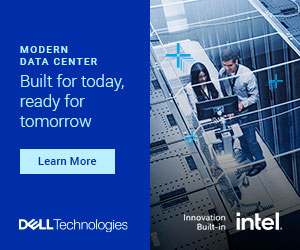In part 1 of this series we discussed how optimizing customer workload placement can drive your multicloud business value proposition
In many customer organizations, workloads originally designed for on-premises were containerized and rehosted in the public cloud, however they likely have not been refactored. In cases where workloads were refactored or built for a specific public cloud, the workload’s needs evolved over time. As such, the workload may be better suited now for a different location. In either instance these customers are finding it challenging to migrate workloads that were optimized to run in a specific location.
Additionally, many organizations don’t have full visibility into their infrastructure. This could be a result of various departmental users spinning up their own workloads in environments without central IT visibility. This makes it increasingly difficult to allocate resources efficiently. And with workloads not efficiently connecting with one another, customers are experiencing dramatically increased costs, negatively impacted performance, and potentially devastating security risks.
In some cases, customers are even finding it necessary to repatriate traditional workloads to meet performance, cost, and compliance mandates. As a result, customer organizations are now more receptive than ever to evaluate factors such as workload design, performance, cost, security, and compliance when placing and optimizing workloads. This presents a golden opportunity for Dell Technologies Partners.
How Dell Technologies empowers Partners to deliver on these 4 strategic benefits
1. Cost Optimization: Aligning workloads to optimal environments makes it possible to use resources more efficiently whether that’s on-premises or in the public cloud. By ensuring that workloads are running on the most cost-effective infrastructure, customer organizations can significantly reduce costs for their business. Given the high cost of capital, shifting to a subscription or as-a-service model can also help address cost challenges. An IDC report, commissioned by Dell, found that organizations leveraging Dell APEX can see up to a 39% lower 3-year cost of operations (3).
2. Productivity: APEX allows you and your customers to leverage existing skillsets rather than having to learn how to refactor workloads for multiple on-premises and off-premises environments. APEX also enables organizations to offload infrastructure management. In addition, by optimizing workload placement, customers can reduce latency and increase application responsiveness. The IDC study found that IT infrastructure staff can achieve up to 38% more efficiency with APEX (3).
3. Digital Resilience: You can improve customers’ digital resiliency by ensuring that workloads are running on the most appropriate infrastructure – all without having to worry about interoperability challenges. APEX allows you to help scale customers’ IT infrastructure as business needs evolve, backup and secure data and monitor as needed, and help monitor and recover from attacks and outages. The IDC study found that APEX helped reduce unplanned outages by up to 64% per year (3).
4. Business Acceleration: By optimizing your customers’ workload performance in environments that fit best for the workload, customer IT teams leveraging APEX can help users respond quickly to changes in the market or customer needs. This agility is essential for maintaining a competitive edge, as it allows companies to rapidly scale their operations, launch new products, and enter new markets. The IDC study found that APEX can help organizations achieve up to 12% faster development lifecycles (3).
But don’t just take my word for it. A recent ESG survey found that “82% of organizations struggle to properly size workloads for the optimal infrastructure environment” (1). KPMG also found that “67% of senior technology leaders at U.S. firms say they have yet to see a significant return on cloud investments” (2) - offering further proof of the need to determine optimal workload placement across environments.
The net, net here is Dell APEX enables customer organizations to align workloads to where they’re best suited to drive value for their business. It is the very best way to help your customers achieve multicloud by design by optimizing their workloads so they can gain a competitive edge.
Learn more about how Dell APEX can help you grow your services business by visiting here.
Footnote
1. From a Dell sponsored ESG study Multi-cloud Application Deployment and Delivery Decision Making, February 2023
2. From a KPMG U.S. Technology Survey Report: Digital to the core, 2022
3. Based on an IDC White Paper commissioned by Dell Technologies and Intel: The Business Value of APEX as a Service Solutions, August 2021





















